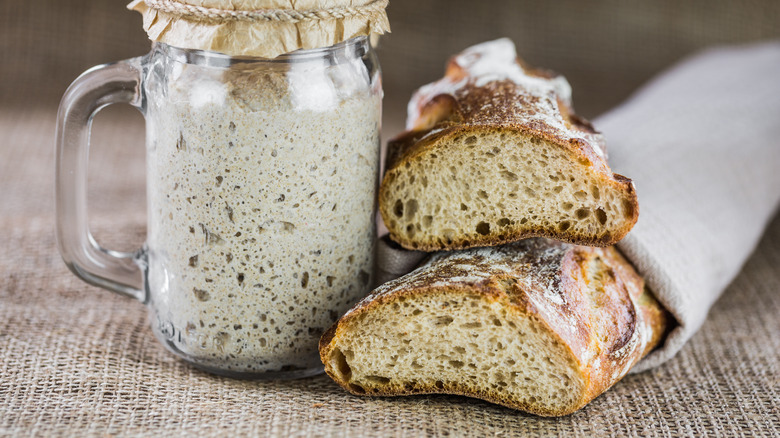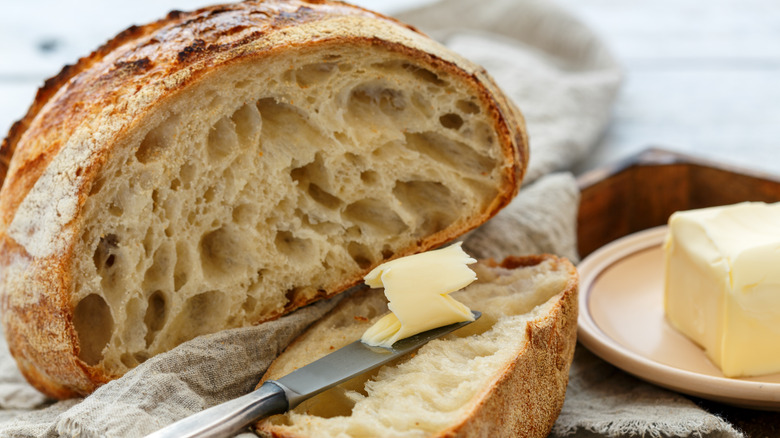The History Of Sourdough May Have Begun In Ancient Egypt
Sourdough is a wildly popular form of bread. It could be because of its naturally chewy crust, subtly yeasty flavor, and light and fluffy crumb, but people have been head over heels for this bread for centuries. It is perfect for grilled cheese or BLTs or a simple jam and butter breakfast. You can add herbs like rosemary, thyme, sage, or oregano to your loaf to create an especially aromatic bake.
According to Don't Waste the Crumbs, sourdough is made using natural yeast from a starter culture. The bread is full of flavorful bacteria which is where sourdough gets its sour characteristic.
Bread & Basil says that this leavening process has been around for millennia and is extremely simple. Starter for sourdough uses two ingredients, flour and water, which are then left to create their own wild yeast culture and good bacteria over time, usually about a week, and if constantly fed, a starter can survive for years! Sourdough is one of the oldest types of bread in the world and its origin seems to stem from North Africa.
Rising bread
Leavened bread is not a modern concept; people have been utilizing wild yeast for thousands of years. According to You Knead Sourdough, the earliest known record of sourdough extends back to 1500 BC. It seems that the Egyptians were the first people to mix wild yeast into their bread, whether purposefully or by accident, and they created a culinary phenomenon that has stuck with us ever since.
The British Broadcasting Corporation says that hieroglyphics have been discovered depicting the process of bread making in ancient Egypt, including the harvesting of grains and the baking process. Bread was reportedly a large part of the diet of the Egyptian laborer's diet along with beer.
It's possible that with all that bread making, some wild yeast made it into a batch and the ancient civilization was completely taken by the light and flavorful baked goods. Another theory is that with their obsession with beer, the Egyptians might have ended up mixing flour with the drink, which resulted in a light airy loaf of bread (via Kitchen Project).

